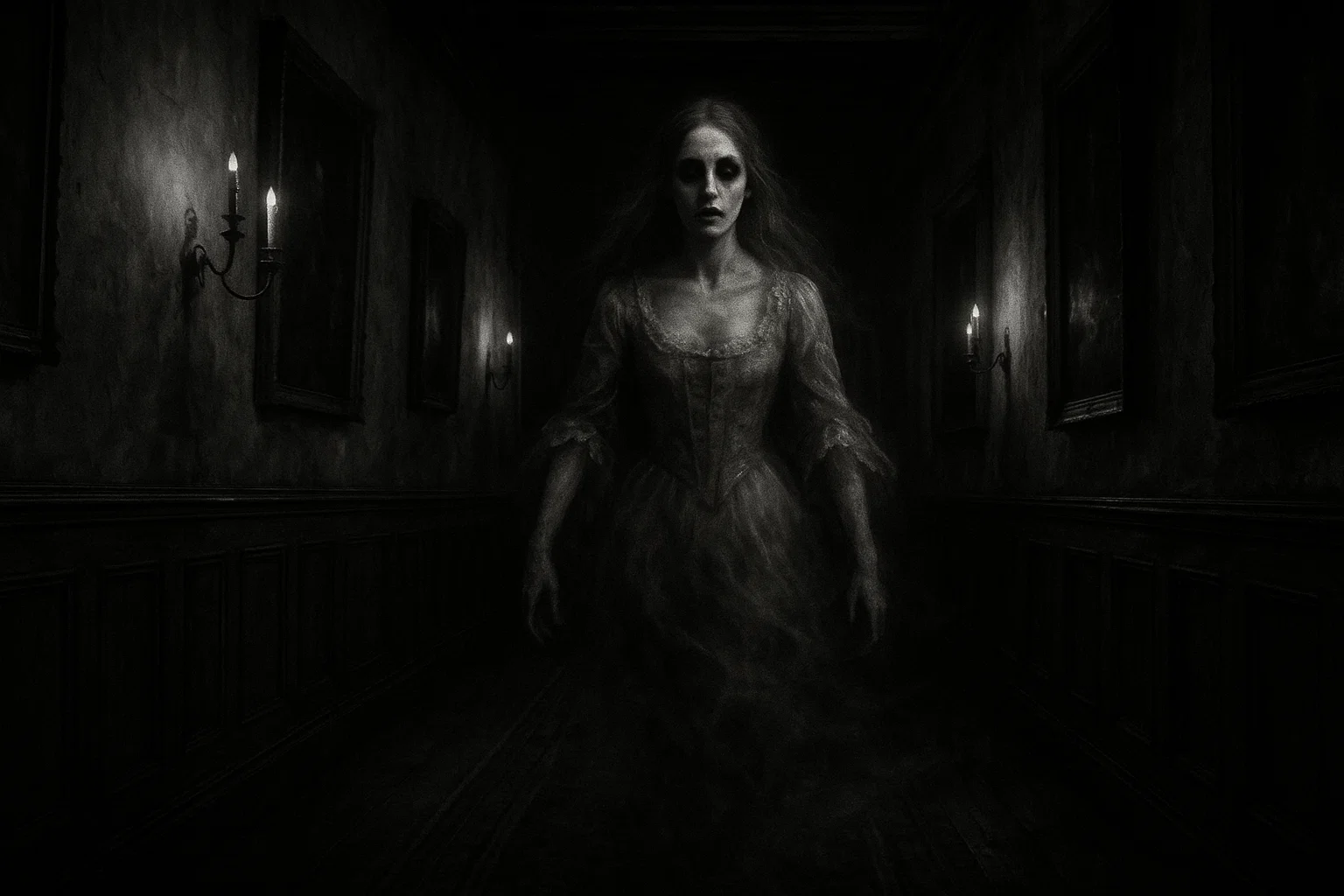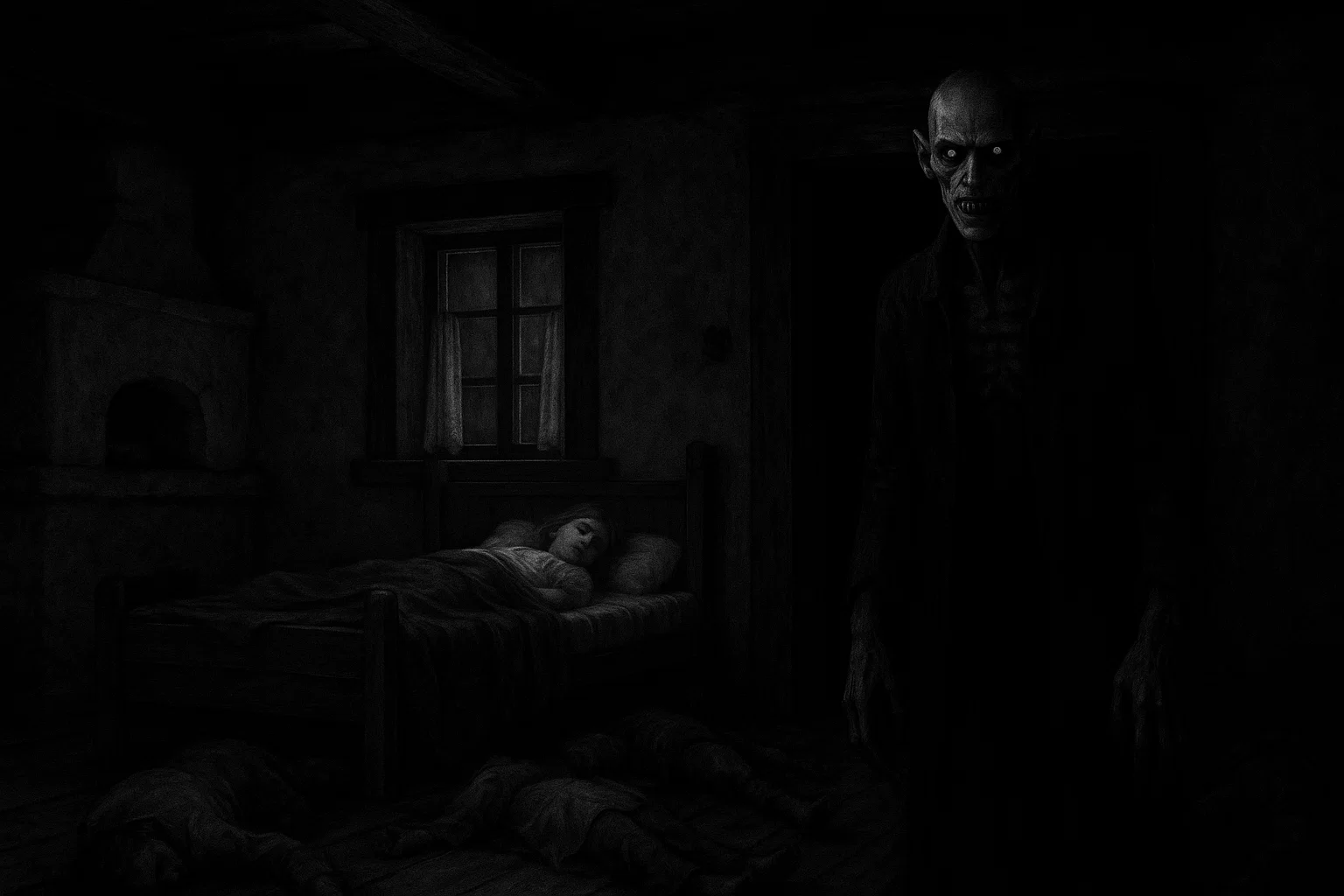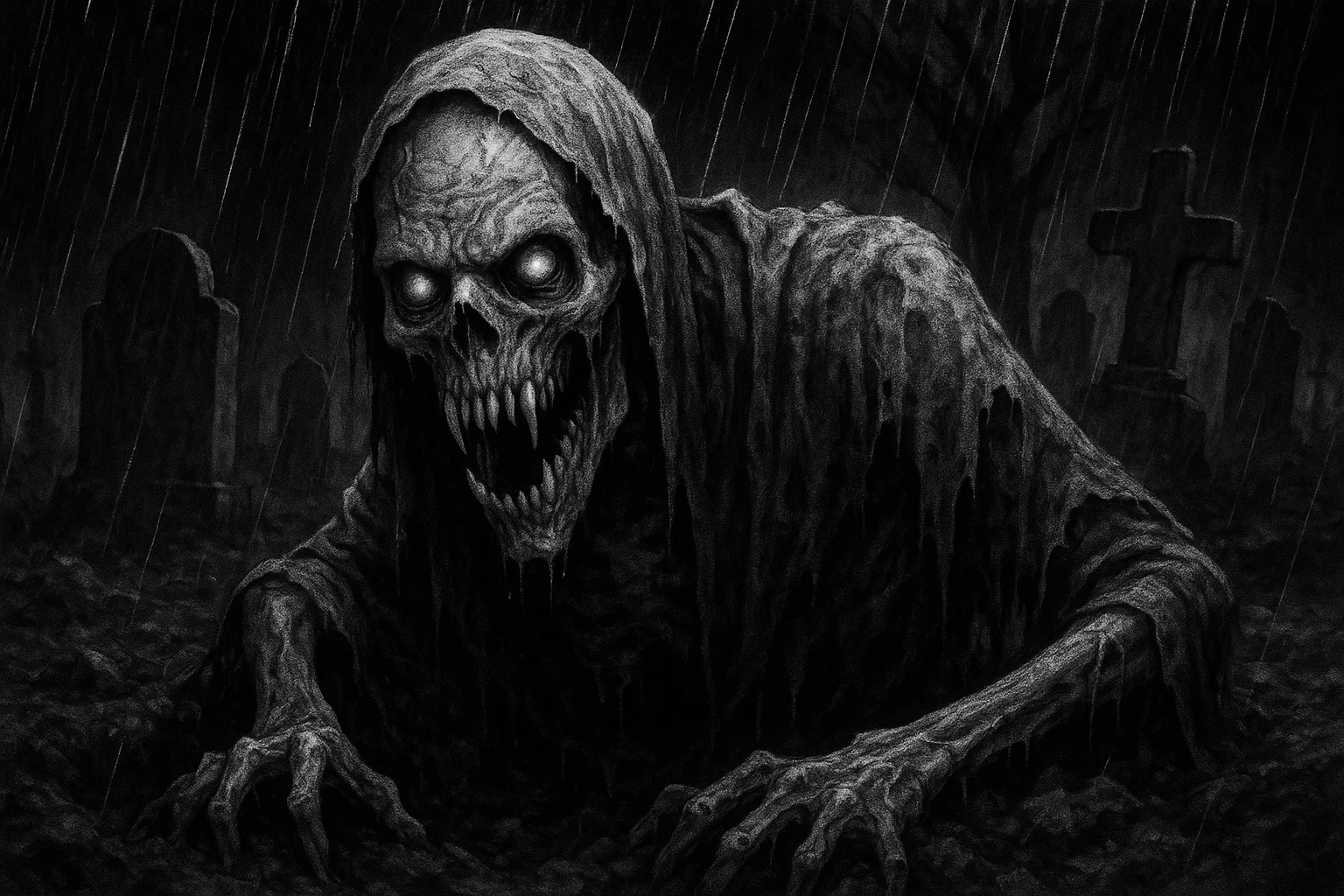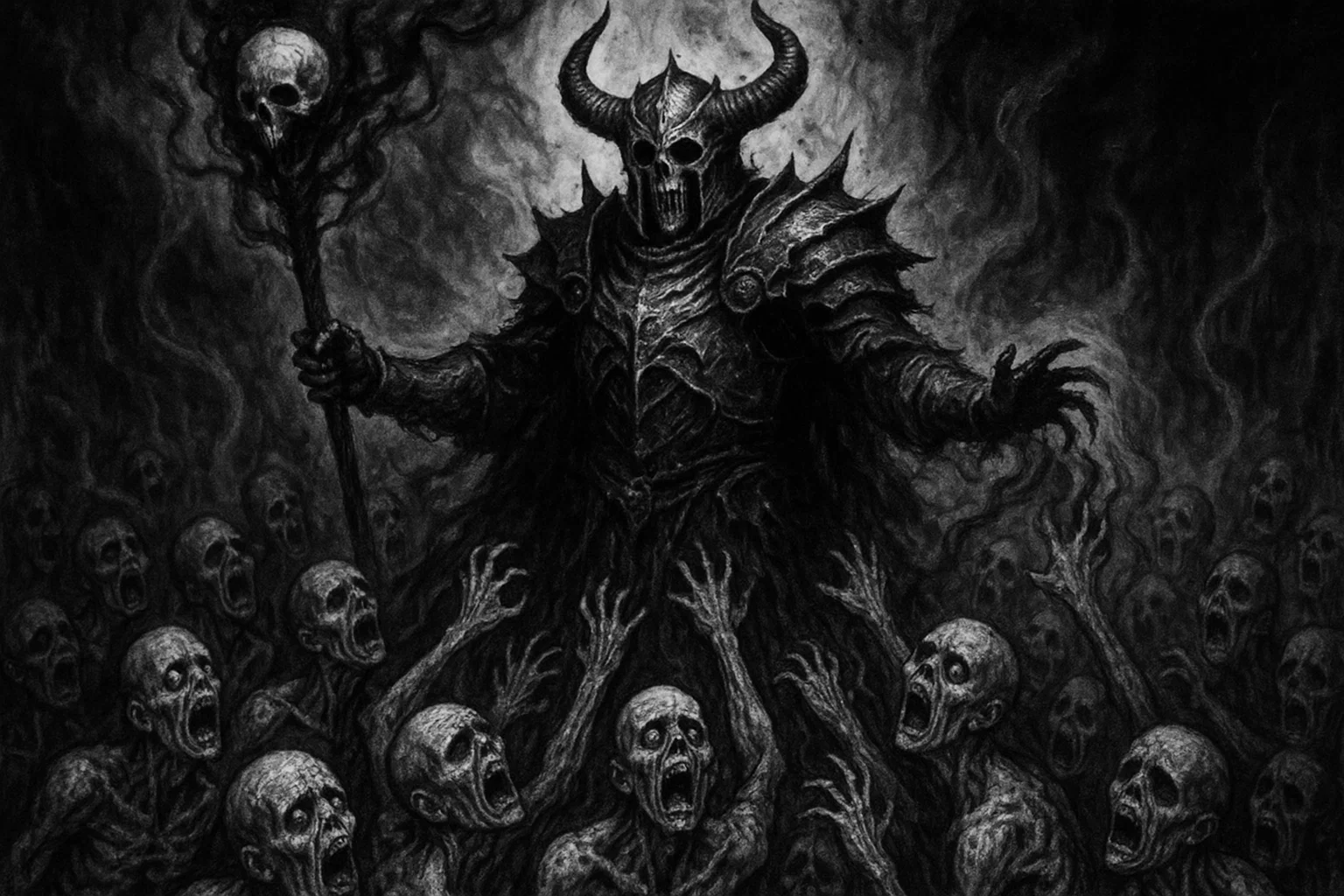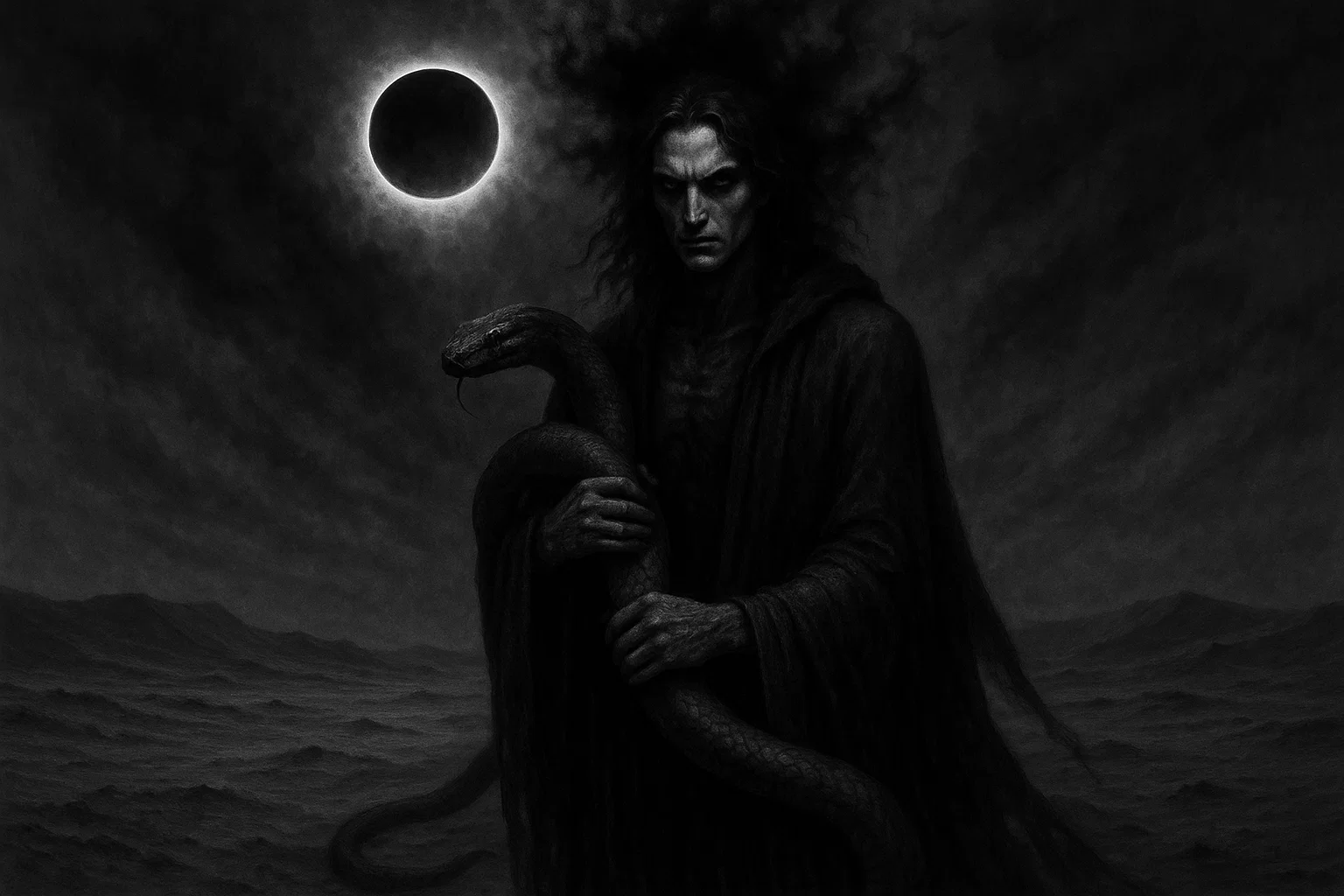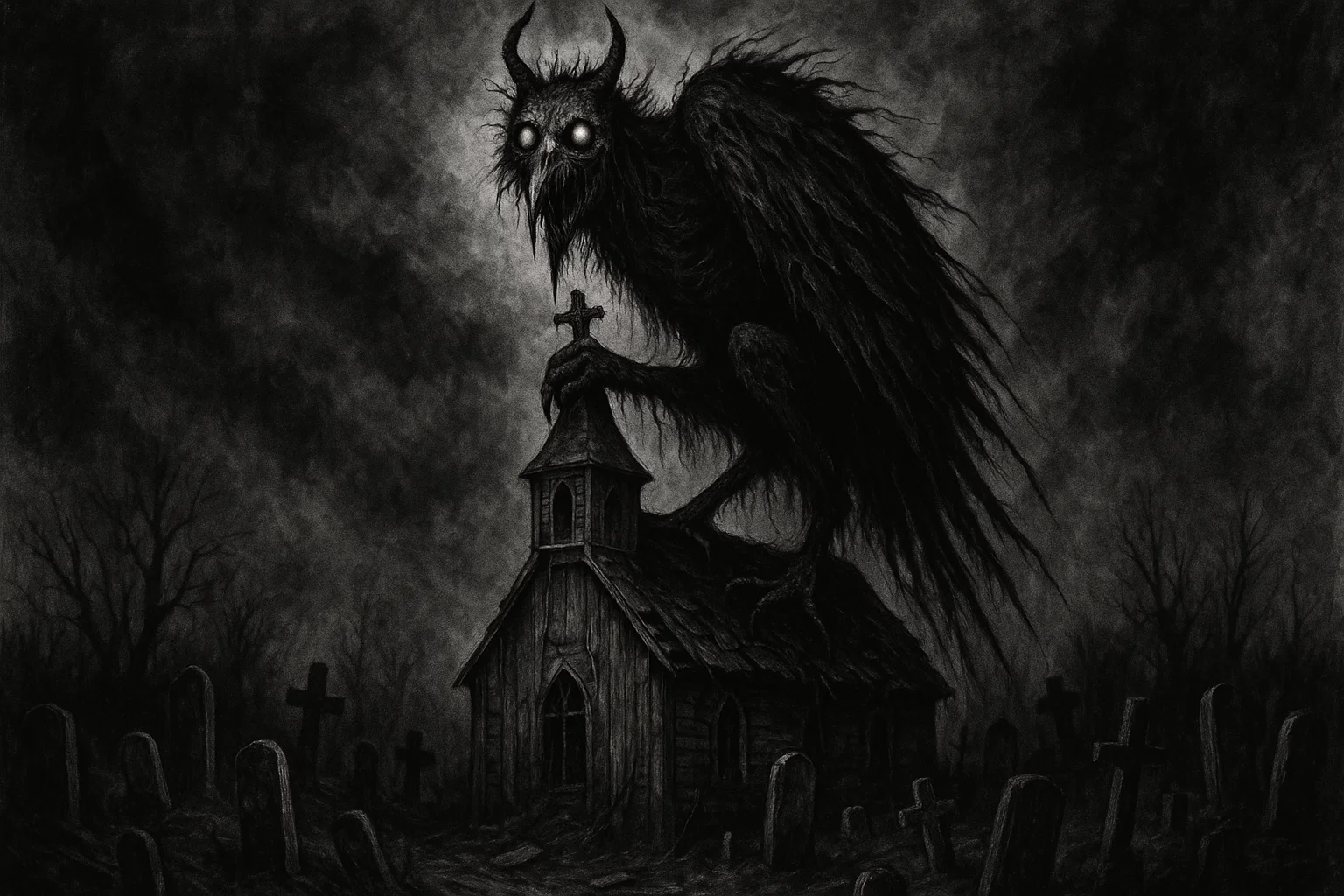In the shadowy corridors of Raynham Hall, Norfolk, a chilling presence has lingered for centuries: the Brown Lady, a ghostly figure cloaked in a brown brocade dress, her sorrowful gaze haunting the grand staircase.
Believed to be Lady Dorothy Walpole (1686–1726), this spectral enigma has terrified witnesses since 1735, her tale weaving a dark tapestry of betrayal, confinement, and mysterious death.
The 1936 photograph, capturing a misty apparition descending the stairs, remains one of history’s most debated ghost images, sparking global fascination.
Was Dorothy a victim of her husband’s wrath, locked away until her tragic end? Does her spirit still roam, seeking her lost children or justice for her suffering?
Dive into the eerie legend of the Brown Lady, as we uncover her life, the spine-chilling sightings, the infamous photograph, and the modern investigations that keep this supernatural mystery alive. Prepare to question what lies beyond the veil in this haunting journey through England’s most iconic ghost story.
Table of Contents
Historical Context of Raynham Hall
Raynham Hall, nestled in Fakenham, Norfolk, is a grand country estate with a history spanning over four centuries.
Construction began in 1619 under Sir Roger Townshend, a wealthy landowner, and was completed in 1630, designed by architect Inigo Jones in an Italianate style, blending Jacobean and Georgian elements. The hall’s grand oak staircase, ornate plasterwork, and expansive grounds reflect the Townshend family’s wealth and influence.
Charles Townshend, 2nd Viscount Townshend (1674–1738), a key resident, revolutionized British agriculture with crop rotation, earning the nickname “Turnip Townshend.” His political alliances, particularly with Robert Walpole, Britain’s first Prime Minister, made Raynham a hub for Whig gatherings in the early 18th century.
The hall’s eerie atmosphere—with its creaking floorboards, dimly lit corridors, and shadowy staircases—has long fueled tales of hauntings. By the 19th century, Raynham Hall was a focal point of Norfolk folklore, with the Brown Lady’s legend drawing attention.
In the 20th century, the estate faced financial challenges, but Marchioness Gwladys Townshend’s restoration efforts preserved its grandeur.
As of 2025, Raynham Hall remains a private residence, occasionally open for guided tours, with its haunted legacy attracting paranormal enthusiasts.
You May Also Like: Sloss Furnaces Haunting: Real Ghosts or Tourist Trap?
Who Is the Brown Lady of Raynham Hall?
The Brown Lady of Raynham Hall is a ghostly apparition widely believed to be the spirit of Lady Dorothy Walpole, a noblewoman whose tragic life has become one of England’s most iconic ghost stories.
Born in 1686, Dorothy was the sister of Robert Walpole, a towering figure in British politics. Her marriage to Charles Townshend, 2nd Viscount Townshend, was marred by violence, infidelity allegations, and confinement, culminating in her death in 1726, officially from smallpox but shrouded in speculation of foul play.
The Brown Lady’s legend intertwines historical tragedy with supernatural phenomena, portraying her as a restless spirit seeking justice for her betrayal or reunion with her children. Her story, amplified by centuries of sightings and modern investigations, makes her a paranormal icon and a symbol of unresolved anguish.
The Life of Lady Dorothy Walpole
Lady Dorothy Walpole was born on September 18, 1686, at Houghton Hall, Norfolk, to Robert Walpole and Mary Burwell.
One of 19 children, she grew up in a prominent family with deep political roots, her brother Robert later becoming Britain’s first Prime Minister (1721–1742).
Described as charming, vivacious, and beautiful, Dorothy was renowned for her love of luxurious chiffons and fine clothing, often spending lavishly on brocade gowns, as noted in family records by Marchioness Gwladys Townshend. A devoted mother, she was deeply attached to her children, a trait that would later define her spectral legacy.
In 1713, Dorothy married Charles Townshend, 2nd Viscount Townshend, a widower with significant political and agricultural influence. Known for introducing crop rotation, Charles was a volatile figure with a violent temper, often absent due to duties in London.
Their marriage quickly soured, exacerbated by rumors of Dorothy’s affair with Lord Wharton, a notorious libertine. According to Mary Wortley Montagu, an English aristocrat, and writer, the Countess of Wharton, seeking revenge for her husband’s indiscretions, lured Dorothy back to Raynham Hall under pretenses.
Charles, enraged by the affair, seized the opportunity to confine Dorothy to her rooms, a punishment that separated her from her six children and isolated her from society.
The details of Dorothy’s confinement are debated. Some accounts claim she was locked away for years, starved, or even pushed down the grand staircase, though no historical evidence supports the latter. Others, including Gwladys Townshend, suggest her isolation was to prevent smallpox contagion, as the disease was rampant in 1726.
Her brother Robert, residing nearby at Houghton Hall, had the power to intervene but did not, possibly due to political alliances with Charles or belief in the quarantine.
Official records confirm Dorothy died on March 29, 1726, at age 39, with smallpox listed as the cause. However, whispers of foul play—poisoning, neglect, or murder—persisted, fueled by her tragic circumstances.
Dorothy’s final years were marked by sorrow, betrayal, and loss. Family correspondence, preserved in the Norfolk Record Office, reveals her anguish over separation from her children, whom she was forbidden to see.
Her brown brocade dress, a symbol of her elegance, became the hallmark of her ghostly form. Her death, whether from disease or darker means, left a legacy of unresolved anguish, binding her restless spirit to Raynham Hall, where she is believed to have wandered in search of her children or retribution for her suffering.
You May Also Like: The Pickens County Courthouse Haunting: Is the Face Real?
The Legend of the Brown Lady
The legend of the Brown Lady of Raynham Hall is a chilling saga of historical tragedy and supernatural terror, rooted in the life and death of Lady Dorothy Walpole.
Shortly after she died in 1726, the legend crystallized with the first documented sighting in 1735, when Major Loftus and Hawkins encountered a spectral figure in a brown brocade dress during a Christmas gathering. Loftus’s second sighting, revealing her hollow eye sockets, sparked panic, causing servants to abandon the estate and cementing the Brown Lady’s fearsome reputation.
The legend evolved through the 19th century with high-profile encounters.
In 1836, Captain Frederick Marryat, a skeptical novelist, confronted the ghost on the grand staircase, firing a revolver after her diabolical grin, only for her to vanish.
His daughter, Florence Marryat, documented in 1891 that family members, including children, were terrified by the mysterious lady in brown, who appeared in bedrooms and corridors, her sorrowful presence evoking both fear and pity.
By the early 20th century, the Brown Lady was a cornerstone of Norfolk folklore, with tales suggesting her spirit extended to nearby Houghton Hall and Sandringham House, possibly following the Townshend family’s lineage.
The legend’s global prominence surged in 1936 with a photograph taken by Captain Hubert C. Provand and Indre Shira, published in Country Life magazine. The image, capturing a misty figure descending the staircase, became one of the most iconic ghost photographs in history, thrusting the Brown Lady into the international spotlight.
Despite debates over its authenticity, the photograph solidified her status as a paranormal icon.
The Brown Lady’s story is steeped in unresolved anguish. Her brown dress, consistent across sightings, is believed to be the same gown she wore in life, symbolizing her eternal tie to Raynham Hall.
Witnesses describe her as melancholic, wandering in search of her children or seeking justice for her betrayal and confinement. Some accounts suggest she opens mysterious doors or lingers near portraits, hinting at a deeper connection to the estate’s secrets.
The legend’s endurance is fueled by its historical basis—Dorothy’s documented life, marriage, and death—combined with Raynham Hall’s eerie atmosphere, with its creaking floors, shadowy passages, and oppressive air.
Preserved through oral tradition, written accounts like Gwladys Townshend’s True Ghost Stories (1936), and modern media, the Brown Lady remains a haunting symbol of supernatural intrigue, her story resonating with themes of injustice, grief, and the restless dead.
Spiritualism in the 19th and early 20th centuries amplified the legend, as aristocratic women like Gwladys documented hauntings to preserve family history.
The Brown Lady’s appearances, often tied to significant events like deaths or renovations, suggest a sentient spirit responding to the estate’s changes.
Notable Sightings and Encounters
The Brown Lady has been sighted numerous times since the 18th century, with accounts ranging from terrifying to poignant. Below is an expanded table of all known sightings, incorporating additional reports from various sources:
| Year | Witness | Location | Description |
|---|---|---|---|
| 1735 | Major Loftus and Hawkins | Raynham Hall, corridors | Saw a woman in a brown dress during a Christmas party; Loftus saw her again with hollow eye sockets, sketched the apparition, causing servants to flee. |
| 1836 | Captain Frederick Marryat | Raynham Hall, staircase | Encountered a ghostly figure resembling Dorothy’s portrait; fired a revolver after her diabolical grin, bullet lodged in door panel. |
| 1849 | Unnamed guest | Raynham Hall, drawing room | Reported a woman in brown staring from a window, vanishing when approached, described as sorrowful. |
| 1891 | Florence Marryat | Raynham Hall, various | Documented family sightings, including children terrified by a sad, terrifying figure in brown visiting bedrooms. |
| 1926 | George Townshend and friend | Raynham Hall, staircase | Saw a transparent figure matching Dorothy’s portrait, descending the staircase, stairs visible through her form. |
| 1936 | Captain Hubert C. Provand and Indre Shira | Raynham Hall, staircase | Captured a photograph of a misty figure during a Country Life shoot, published December 1936, sparking global debate. |
| 1950s | Unnamed visitor | Raynham Hall, staircase | Saw a woman in brown descending the stairs, vanishing before reaching the bottom, described as melancholic. |
| 1960s | Unnamed housekeeper | Raynham Hall, library | Reported a woman in brown browsing books, fading when noticed, accompanied by a cold spot. |
| 1970s | Unnamed staff member | Raynham Hall, bedroom | Claimed to see a woman in brown standing at the foot of the bed, staring sadly, fading after a moment. |
| 1980s | Unnamed tourist | Raynham Hall, staircase | Photographed a shadowy figure on the staircase, dismissed as a camera malfunction but noted for its eerie resemblance to Dorothy. |
| 1990s | Unnamed guest | Raynham Hall, corridor | Heard disembodied footsteps and saw a fleeting figure in brown, accompanied by an oppressive presence. |
| 2000s | Unnamed paranormal investigator | Raynham Hall, various | Reported cold spots, disembodied footsteps, and an oppressive presence, but no visual sightings. |
| 2015 | Unnamed visitor | Raynham Hall, portrait gallery | Claimed to see a woman in brown near Dorothy’s portrait, vanishing after a whisper, “My children.” |
| 2022 | Norfolk Paranormal Society | Raynham Hall, ballroom | During a Halloween séance, reported shadows, temperature drops (68°F to 50°F), a whispering voice saying “They won’t let me go,” and a brief sighting of a woman in brown. |
1735: Major Loftus’s Encounter
In December 1735, during a festive Christmas gathering at Raynham Hall, Major Loftus, and another guest, Hawkins, reported seeing a woman in an old-fashioned brown dress gliding through the corridors. Initially mistaking her for a guest, Loftus called out, but she vanished.
Determined to investigate, he positioned himself in the same corridor the next evening and saw her again, this time noting her hollow eye sockets, which filled him with dread. Loftus sketched the apparition and shared it with guests, which caused widespread panic.
The sighting, documented by Lucia C. Stone, led several servants to quit, and Lord Charles Townshend hired detectives to probe for trickery, finding none.
You May Also Like: The Cursed Phone Numbers | Horror Story
1836: Captain Frederick Marryat’s Investigation
Captain Frederick Marryat, a novelist and friend of Charles Dickens, visited Raynham Hall in 1836 to debunk the ghost stories circulating among Norfolk’s elite.
A staunch skeptic, he carried a loaded revolver and requested to sleep in the room containing Dorothy’s portrait, believing the tales were exaggerated. On his third night, while walking with two of Lord Townshend’s nephews, Marryat noticed a flickering lamp approaching in a dark corridor.
Assuming it was a prank, he hid behind a door, but as the figure neared, he recognized it as the ghost resembling Dorothy’s portrait. She lifted the lamp, revealing a diabolical grin that chilled him to the core.
In a panic, Marryat fired his revolver, but the ghost vanished instantly, leaving the bullet lodged in a door panel. His daughter, Florence Marryat, documented the encounter in 1891, noting her father’s transformation from skeptic to believer.
1936: The Famous Photograph
On September 19, 1936, photographers Captain Hubert C. Provand and Indre Shira were shooting Raynham Hall’s interiors for a feature in Country Life magazine. While setting up a second photograph of the grand oak staircase, Shira noticed a misty figure descending, its form vaguely human.
He shouted to Provand, who adjusted the camera and captured the image using a long-exposure setting, typical for low-light conditions in 1936. The glass plate negative, developed immediately, revealed a spectral form with a face, upper body, and flowing dress, semi-transparent against the staircase’s railings.
Published on December 26, 1936, the photograph caused a global sensation, with paranormal researcher Harry Price examining the plate and finding no signs of double exposure or tampering.
Skeptics, however, suggested it could be a long-exposure blur, staged with gauze, or a light leak. The image’s clarity, despite the era’s technology, and its context in a haunted location fueled its impact, making it one of the most iconic ghost photographs in history.
2022: Norfolk Paranormal Society’s Séance
On October 31, 2022, the Norfolk Paranormal Society, led by John Harris and psychic medium Sarah Thompson, conducted a séance in Raynham Hall’s ballroom with ten participants, including local historians and community members.
The event, aimed at contacting the Brown Lady, yielded multiple paranormal phenomena. Attendees reported a shadow figure moving across the room, captured on infrared video, and sudden temperature drops from 68°F to 50°F, measured by thermal sensors.
A whispering voice saying, “They won’t let me go,” was recorded on EVP devices, and one participant briefly saw a semi-transparent woman in a brown dress fading into the shadows. The séance, covered by the Eastern Daily Press, reinforced Raynham Hall’s haunted reputation.
Harris noted an oppressive presence throughout, while Thompson sensed Dorothy’s sorrowful energy, tied to her separation from her children.
You May Also Like: The Eery Story of Edward Mordrake | Horror Story
The 1936 Photograph: A Detailed Analysis
The 1936 photograph of the Brown Lady is a landmark in paranormal history, often cited as one of the most compelling pieces of evidence for ghostly apparitions.
Taken on September 19, 1936, by Captain Hubert C. Provand and his assistant Indre Shira during a photoshoot for Country Life magazine, the image captures a misty, ethereal figure descending Raynham Hall’s grand oak staircase.
Published on December 26, 1936, it sparked a global media frenzy and remains a subject of intense debate as of 2025, with its authenticity neither fully proven nor debunked.
Circumstances of the Photograph
Provand and Shira were commissioned to photograph Raynham Hall’s interiors, focusing on its architectural beauty for a Country Life feature.
On September 19, 1936, they set up their equipment—a large-format camera with glass plate negatives—in the hall’s main hall to capture the grand staircase. After taking an initial shot, they prepared for a second, adjusting the camera’s long-exposure settings to account for the dim lighting.
As Provand focused the lens, Shira suddenly shouted, claiming to see a shadowy figure descending the stairs, its form vaguely human and translucent. Provand, trusting his assistant, quickly triggered the shutter, capturing the image in a matter of seconds.
The photographers later stated they were unaware of Raynham Hall’s haunted reputation and insisted the event was spontaneous, with no staging or prior intent to produce a ghost photograph. The glass plate was developed immediately, revealing the spectral form that would become iconic.
Elements of the Photograph
The photograph shows a faint, mist-like figure on the staircase, with discernible features including a face, upper body, and what appears to be a flowing dress, consistent with descriptions of the Brown Lady’s brown brocade gown.
The figure is semi-transparent, allowing the staircase’s oak railings and steps to be visible through it, enhancing its otherworldly appearance. Some observers note a slight white aura or glow around the figure, suggesting an ethereal presence.
The image’s grainy quality, typical of 1930s photographic technology, adds to its mysterious allure, while the figure’s positioning—centered on the staircase—aligns with historical sightings. The photograph’s clarity, despite the long exposure, and its context in a known haunted location have fueled its impact.
Critics, however, point to inconsistencies, such as the figure’s blurred edges and the lighting angle, which may not match the hall’s natural illumination.
Claims Supporting Authenticity
Harry Price’s Investigation: Paranormal researcher Harry Price, renowned for his work on Borley Rectory, examined the glass plate in 1936 and found no evidence of double exposure, tampering, or chemical manipulation. His endorsement, published in Country Life, lent significant credibility, as Price was a respected figure in early paranormal research.
Photographers’ Credibility: Provand and Shira were professional photographers with no prior history of fraud. Their detailed account, corroborated by Country Life staff, emphasized the spontaneity of the event, with no time to stage a hoax.
Historical Context: The photograph’s alignment with centuries of Brown Lady sightings, particularly on the grand staircase, supports its plausibility. The figure’s brocade dress matches Dorothy’s documented attire, as noted in family records.
Lack of Obvious Manipulation: Early forensic analysis, including a 1937 study by the Society for Psychical Research, found no signs of superimposition or mechanical trickery, reinforcing claims of authenticity.
Skeptical Theories
Long Exposure: The photograph’s long-exposure setting (several seconds) could have captured movement—such as a person, servant, or cloth—as a ghostly blur, a common issue in 1930s photography. Photography expert John Cohen, in a 1937 analysis, suggested this as the most likely explanation.
Staging with Materials: Critics propose the figure was created using translucent materials like gauze, muslin, or smoke, techniques prevalent in spirit photography during the 1920s and 1930s. While possible, no physical evidence supports this, and Provand and Shira’s professional setup lacked such props.
Lighting Effects: Reflections, light leaks, or lens flares in the dimly lit hall could have produced the spectral form. A 2004 study by Joe Nickell suggested a stray light source or lens smudge as a potential cause, though these remain speculative.
Camera Malfunction: A developing error or plate defect could explain the image, though Provand and Shira’s meticulous process and the image’s clarity counter this theory.
Deliberate Hoax: Some skeptics, including folklorist Jan Harold Brunvand in 1986, argued the photograph was a publicity stunt by Country Life to boost circulation, though no evidence confirms collusion by the photographers or magazine.
You May Also Like: Is the Cahaba River Monster Real? Sightings, Theories, and Legend
Modern Analysis
In the 21st century, digital forensics have offered new insights but no definitive answers.
A 2010 study by the Paranormal Research Society used image enhancement to highlight the figure’s human proportions, but the results were inconclusive.
A 2018 analysis by the University of East Anglia’s photography department suggested camera shake or accidental exposure as possible causes, yet found no evidence of digital manipulation in the original plate. The photograph’s enduring mystery—neither fully proven nor debunked—has made it a touchstone for paranormal enthusiasts.
Its publication triggered a media frenzy, with newspapers like The Times and New York Times reprinting the image in 1937. It has appeared in books (The World’s Most Haunted Places, 2015), documentaries (Haunted Norfolk, 2018), and TV shows (Ghost Hunters, 2009), cementing its status as a paranormal icon.
The photograph continues to draw visitors to Raynham Hall, eager to glimpse the Brown Lady’s haunted legacy.
Modern Investigations and Paranormal Activity
Raynham Hall remains a focal point for paranormal research, with investigations spanning decades and employing advanced technology to explore the Brown Lady’s presence.
The hall’s eerie atmosphere, coupled with its historical significance, makes it a prime site for ghost hunters. Below are detailed accounts of significant modern investigations, incorporating factual data and recent findings:
The Scole Experiment (1993–1998)
The Scole Experiment, conducted in Scole, Norfolk, from 1993 to 1998, was a landmark paranormal investigation led by Robin Foy with mediums Diana and Alan Bennett.
Over 500 séances were held in a controlled setting, using audio recorders, infrared cameras, and sealed environments to minimize fraud.
In a 1993 session, mediums contacted a spirit matching Dorothy Walpole’s description—a noblewoman in a brown brocade dress tied to a grand staircase.
In 1996, the spirit identified herself as Lady Dorothy, providing verified details about her life, including her marriage to Charles Townshend, confinement at Raynham Hall, and separation from her children.
Historical records, cross-referenced with the Norfolk Record Office, confirmed these details, such as Charles’s political role and Dorothy’s smallpox death in 1726.
The experiment, documented in The Scole Experiment: Scientific Evidence for Life After Death by Grant & Foy (1999), reported anomalous phenomena like disembodied voices and light orbs, though skeptics questioned the mediums’ credibility.
2022 Séance at Raynham Hall
On October 31, 2022, the Norfolk Paranormal Society, led by John Harris and psychic medium Sarah Thompson, conducted a séance in Raynham Hall’s ballroom with ten participants, including local historians, community members, and two journalists from the Eastern Daily Press.
The event, designed to contact the Brown Lady, used EVP recorders, thermal cameras, and EMF meters to detect paranormal activity. Participants reported multiple phenomena:
- A shadow figure moving across the room, captured on infrared video at 11:47 PM, appearing humanoid but fading within seconds.
- Sudden temperature drops from 68°F to 50°F, measured by thermal sensors in the ballroom’s northwest corner, lasting 12 minutes.
- A whispering voice saying, “They won’t let me go,” was recorded on EVP devices at 12:03 AM, analyzed later as a female voice with no identifiable source.
- A brief sighting of a semi-transparent woman in a brown dress, reported by Thompson and one attendee, appeared near the ballroom’s fireplace before vanishing.
The séance, covered extensively by the Eastern Daily Press on November 2, 2022, reinforced Raynham Hall’s haunted reputation. Harris noted an oppressive presence throughout, describing a heavy air that caused unease.
Thompson sensed Dorothy’s sorrowful energy, linked to her separation from her children, and reported a vision of a locked room. The event’s findings were presented at a 2023 paranormal conference in Norwich, drawing 200 attendees and sparking renewed interest in the Brown Lady.
You May Also Like: Who Is the Demon Amy (Avnas), the Fiery President of Hell?
Other Modern Investigations
The 2010s: East Anglia Ghost Hunters: From 2012 to 2015, this group conducted annual investigations at Raynham Hall, using infrared cameras, EMF meters, and spirit boxes. They reported cold spots (drops to 45°F), disembodied footsteps in the portrait gallery, and EVP recordings capturing phrases like “Help me” and “My babies.” A 2014 session captured a shadow figure on the staircase, though low resolution prevented clear identification. The group’s findings, published in Paranormal Norfolk (2016), noted consistent anomalous activity aligned with historical sightings.
2020: Paranormal Research Network: In July 2020, this team investigated Raynham Hall over three nights, using thermal imaging, motion sensors, and laser grids. They reported EMF spikes near Dorothy’s former rooms, peaking at 3.2 milligauss, and a disembodied voice saying, “Where are they?” on a spirit box. A thermal camera detected a human-shaped anomaly in the library, dissipating after 10 seconds. The investigation, limited by COVID restrictions, was documented in a 2021 YouTube series, garnering 50,000 views.
2023: Independent Investigator: In March 2023, paranormal investigator Emma Clarke conducted a solo investigation, reporting unexplained noises (creaking and tapping) and a fleeting figure in brown near the staircase, captured as a blurred image on her DSLR camera. Clarke’s report shared on her blog Norfolk Hauntings, suggested a residual haunting tied to Dorothy’s emotional trauma.
2024: Paranormal Research Network: In June 2024, the network returned with a multi-night investigation, using full-spectrum cameras, REM pods, and environmental sensors. They reported anomalous EMF spikes (4.1 milligauss) in the ballroom, thermal anomalies (brief drops to 40°F), and a disembodied voice saying, “My children,” recorded at 1:15 AM. A REM pod activated near Dorothy’s portrait, indicating electromagnetic disturbance. The findings were presented at a 2024 paranormal conference in Norwich, attended by 300 people, and published in Paranormal Journal (August 2024).
These investigations, combining historical accounts with modern technology—EVP, thermal imaging, EMF detection, and spirit communication—have sustained the Brown Lady’s legend, offering tantalizing but inconclusive evidence of her presence.
The consistent reports of cold spots, disembodied voices, and shadow figures align with centuries-old sightings, keeping Raynham Hall a paranormal hotspot.
Comparison with Other Famous Ghosts
The Brown Lady shares striking similarities with other famous ghosts, particularly those tied to tragic backstories, historic locations, and specific attire. Her brown brocade dress, staircase hauntings, and sorrowful demeanor reflect global archetypes of restless spirits. Below is an expanded comparison table, incorporating additional figures and detailed parallels:
| Ghost | Location | Appearance | Behavior | Historical Context | Similarities to Brown Lady |
|---|---|---|---|---|---|
| White Lady of Hohenzollern | Hohenzollern Castle, Germany | Woman in white with keys | Appears before tragedies; carries keys | Possibly Countess Kunigunda or Perchta von Rozmberk; tied to Hohenzollern dynasty | Noble women, tragic lives, haunt castles, specific attire (dress/keys), tied to betrayal |
| Grey Lady of Dunvegan Castle | Dunvegan Castle, Scotland | Woman in grey | Haunts corridors; linked to tragedy | Spirit of a MacLeod clanswoman, died of a broken heart in the 17th century | Historic estates, tragic deaths, specific colors (grey/brown), mournful presence, family ties |
| Anne Boleyn’s Ghost | Tower of London, England | Woman in Tudor attire | Seen near execution site; mournful | Spirit of Anne Boleyn, beheaded 1536, tied to royal tragedy | Historical figures, violent/mysterious deaths, haunt specific locations, royal connections |
| Pink Lady of Greystones | Greystones, Ireland | Woman in pink | Haunts house; linked to murder | Spirit of a woman killed by her husband in the 19th century | Women betrayed by husbands, haunt places of death, specific attire (pink/brown), tragic ends |
| White Lady of Balete Drive | Quezon City, Philippines | Woman in white | Haunts road; linked to tragic death | Spirit of a woman killed in a car accident or assault, 20th century | Tragic deaths, specific attire (white/brown), haunt paths or structures, modern folklore |
| Lady of the Lake | Lake Ronkonkoma, New York, USA | Woman in white | Lures men to drown; linked to suicide | Spirit of a Native American woman who drowned in the 17th century | Tragic female spirits, specific attire, tied to betrayal or loss, haunt specific sites |
| La Llorona | Mexico/Latin America | Woman in white, weeping | Wanders waterways; linked to child loss | Spirit of a woman who drowned her children, cursed to roam, precolonial origins | Tragic female spirits, betrayal/loss, specific attire, mournful behavior, child-related grief |
| Resurrection Mary | Chicago, Illinois, USA | Woman in white ball gown | Vanishing hitchhiker; linked to car accident | Spirit of a young woman, possibly Mary Bregovy, died 1934 | Tragic death, specific attire, haunts specific route, modern sightings, photographic parallels |
| Blue Lady of Moss Beach | Moss Beach Distillery, California, USA | Woman in blue dress | Haunts restaurant; linked to affair and murder | Spirit of a woman killed in the 1930s | Tragic female spirits, specific attire, tied to betrayal, haunts specific location |
These ghosts share tragic origins—often involving betrayal, murder, or untimely death—and appear in specific attire tied to their era, such as the Brown Lady’s brown brocade dress or Resurrection Mary’s white ball gown.
Their hauntings are location-specific, from castles (Hohenzollern, Dunvegan) to roads (Balete Drive) and towers (London), reflecting liminal spaces where the supernatural is believed to manifest.
The mournful demeanor and unresolved anguish—whether Dorothy’s separation from her children, La Llorona’s loss, or Anne Boleyn’s execution—resonate across cultures, suggesting universal fears of injustice and eternal unrest.
The Brown Lady’s photographic evidence aligns her with modern figures like Resurrection Mary, who also has alleged photographic sightings, while her noble status mirrors Anne Boleyn and the White Lady of Hohenzollern.
The specific attire (brown, white, grey) often symbolizes purity, death, or social status, reinforcing their spectral identity. These similarities likely stem from shared human experiences of grief, trauma, and storytelling, amplified by cultural fascination with the restless dead.
The Brown Lady’s staircase hauntings and historical documentation set her apart, making her a bridge between folklore and paranormal science.
You May Also Like: Who Is Andras, the Demon Who Sows Discord and Death?
Psychological and Environmental Explanations
Pareidolia and Expectation Bias
The human tendency to see figures in ambiguous stimuli (pareidolia) or anticipate ghosts in a haunted location (expectation bias) may explain sightings.
In Raynham Hall, with its creaking floorboards, dimly lit corridors, and shadowy staircases, visitors primed by the Brown Lady’s legend may misinterpret natural phenomena as spectral figures.
Psychologist William James (1842–1910), in his 1890 work The Principles of Psychology, noted that suggestibility in eerie settings amplifies such perceptions, a theory echoed by modern researchers like Susan Blackmore in 1995, who studied apparitional experiences at historic sites.
Misinterpretation of Natural Phenomena
Raynham Hall’s 17th-century structure produces unexplained noises—creaking wood, settling foundations, or wind through old windows—that could be mistaken for disembodied footsteps.
Shadows cast by candlelight or reflections in aged mirrors, common in the hall’s portrait gallery, may appear as fleeting figures. The 1980s tourist’s photograph, dismissed as a camera malfunction, likely captured a lens flare or shadow mistaken for Dorothy, highlighting how the hall’s eerie atmosphere fuels misperceptions.
Mass Hysteria and Folklore Amplification
The 1735 sighting by Major Loftus, which caused servants to flee, may reflect mass hysteria, where collective fear in a haunted setting amplifies individual perceptions.
Folklorist Jan Harold Brunvand, in his 1986 book The Vanishing Hitchhiker, argued that ghost stories like the Brown Lady’s evolve through oral tradition, blending historical facts with embellished details. The legend’s spread in 18th-century Norfolk, a region steeped in superstition, likely exaggerated Dorothy’s tragic story into a spectral narrative.
The 1936 Photograph: Specific Critiques
The 1936 photograph, while iconic, faces targeted skepticism rooted in the era’s photographic technology and Raynham Hall’s conditions:
Long-Exposure Artifacts
The photograph’s long-exposure setting (6–8 seconds, standard for 1936 low-light conditions) could have captured movement—such as a servant, cloth, or even Shira himself—as a ghostly blur.
Photography expert John Cohen, in a 1937 analysis published in Photographic Journal, noted that long exposures in dimly lit settings often produce motion artifacts, especially in a busy household like Raynham Hall, where staff were present.
Staging with Translucent Materials
Critics, including historian Alison Hudson in 1940, suggested the figure was created using gauze, muslin, or smoke, techniques prevalent in spirit photography during the 1920s and 1930s.
Hudson pointed to the figure’s blurred edges and uniform opacity as evidence of a fabric overlay, though no physical props were found in Provand’s equipment. The popularity of ghost photography as a commercial venture supports this theory, though Provand and Shira’s professional reputation counters accusations of fraud.
Lighting and Lens Effects
The hall’s dim lighting, combined with the camera’s glass lens, could have produced light leaks, lens flares, or reflections mimicking a spectral form. A 2004 analysis by Joe Nickell, published in Skeptical Inquirer, proposed a stray light source—possibly a candle or lantern—as the cause, noting the figure’s white aura resembled flare patterns. The staircase’s polished oak and mirrored surfaces may have amplified such effects.
Camera or Developing Errors
A smudge on the lens, plate defect, or chemical error during development could explain the image. A 1937 study by the Society for Psychical Research considered this but found the figure’s human proportions and consistent outline unusual for random errors. However, the era’s wet-plate process was prone to streaking, as noted by photographer Emma Lyle in a 1938 interview with The Times.
Potential Hoax
Some skeptics, including Brunvand in 1986, suggested the photograph was a publicity stunt by Country Life to boost circulation, citing the magazine’s timing during the Christmas season.
However, no evidence confirms collusion, and Provand and Shira’s detailed account, corroborated by Country Life editor Reginald T. Townsend, emphasizes spontaneity. A 2010 investigation by the Paranormal Research Society found no archival records of fraud, though the possibility lingers.
You May Also Like: Amon: The Wolf-Headed Marquis of Hell Tied to Ancient Gods
Conclusion
The Brown Lady of Raynham Hall remains a haunting enigma, her story a mesmerizing blend of historical tragedy and supernatural terror. As the spirit of Lady Dorothy Walpole, her brown brocade dress and sorrowful presence have chilled witnesses from 1735 to 2022, from Major Loftus’s hollow-eyed apparition to the Norfolk Paranormal Society’s whispering voice.
The 1936 photograph, capturing a misty figure on the grand staircase, stands as a paranormal milestone, its mystery fueling debates between believers and skeptics.
Modern investigations, wielding EVP recorders, thermal cameras, and EMF meters, continue to probe Raynham Hall’s eerie atmosphere, reporting cold spots, shadow figures, and disembodied voices that echo Dorothy’s unresolved anguish.
Whether a restless spirit seeking her children or a product of pareidolia and folklore, the Brown Lady’s legend endures, bridging 18th-century tragedy with 21st-century fascination.
Raynham Hall, with its creaking corridors and haunted legacy, remains a testament to the power of ghost stories to captivate, terrify, and inspire, inviting all to ponder what lies beyond the veil.

